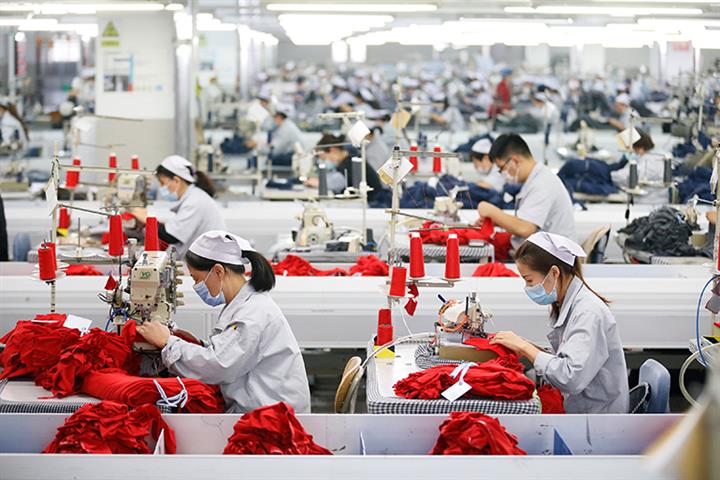 Manufacturing Drive Skewers Gender Balance in China’s Dongguan
Manufacturing Drive Skewers Gender Balance in China’s Dongguan(Yicai Global) July 29 -- The gender ratio in 16 Chinese cities is more unbalanced than the national average of 105.07, Yicai Global found by going through the data for 35 major cities. Dongguan, Shenzhen, Foshan and Guangzhou, all in the Pearl River Delta, are the four with the most uneven ratios.
Last year, the gender ratio of China’s entire population was 105.07 (105.07 males to 100 females), slightly more balanced than in 2010, according to the latest official figures.
Dongguan had a gender ratio of 130.06 last year, up from 117.81 in the sixth national census in 2010. The number of males among permanent residents was 5.9171 million last year, accounting for 56.53 percent of the city’s population, while there were 4.5495 million females, accounting for 43.47 percent, the data showed.
Dongguan is the world's largest manufacturing base for computer parts and the main production base in China for clothing, shoes and toys. As a well-known manufacturing city, it has a large number of industrial workers, according to the local statistics bureau. The upgrading and transformation of traditional industries has boosted demand for male workers, and more male migrants driving up the gender ratio, it added.
The gender ratio in neighboring first-tier city Shenzhen reached 122.43. The city is not large, but types of businesses clustered in the central area and the suburbs are quite different, Peng Peng, executive president of the Guangdong Institutional Reform Research Association, told Yicai Global.
The city’s main urban area is dominated by modern service industries, where the gender ratio is not very unbalanced, Peng said. But the suburban areas are dominated by manufacturing industry, with more jobs for men.
Just three cities among the 35, Nantong, Dalian and Shenyang, have a gender ratio of less than 100, with more women than men. The reason is believed to lie in population outflows and a larger proportion of elderly people.
Editor: Tom Litting